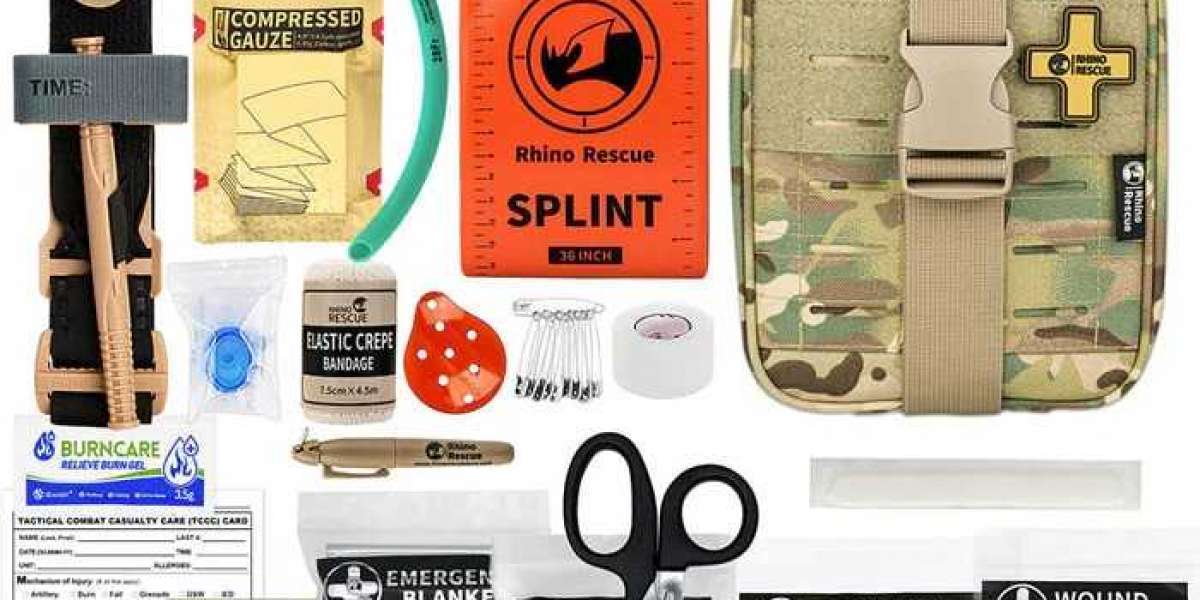Military combat tourniquet are essential for managing severe bleeding in emergency situations. Designed for efficient application, they help prevent excessive blood loss from limb injuries, potentially saving lives. Here’s a comprehensive guide to using a military-grade tourniquet effectively:
Understanding the Importance of a Tourniquet
Combat tourniquets are invaluable in emergencies involving heavy bleeding, particularly for injuries on limbs. Whether used in military, civilian, or outdoor settings, they provide critical care by cutting off blood flow to prevent excessive loss, reducing the risk of shock or death.
Key Features to Know
- Windlass Rod: A rod designed to twist and tighten the tourniquet to stop blood flow.
- Strap Material: High-strength nylon or similar materials ensure the tourniquet’s durability and reliability.
- Locking Mechanism: Keeps the windlass securely in place.
- Single-Handed Design: Some tourniquets allow self-application when one hand is free, critical for solo emergencies.
Steps to Apply a Military Combat Tourniquet
Applying a tourniquet involves several crucial steps. Each step needs precision, as incorrect application can reduce effectiveness or cause additional harm.
Step 1: Positioning the Tourniquet
Place the tourniquet around the injured limb, above the bleeding site, but not on a joint (place it about 2-3 inches above the wound). If the injury is high up on the limb, position the tourniquet closer to the torso or shoulder to ensure effective blockage.
Step 2: Tighten the Strap
Once positioned, pull the strap to fit snugly around the limb. Ensure it’s secure enough that no slack remains, as a loose strap will reduce the tourniquet’s effectiveness.
Step 3: Twist the Windlass Rod
With the strap secured, locate the windlass rod. Twist it to apply pressure, which will constrict blood vessels and stop blood flow. Continue twisting until the bleeding ceases. Proper pressure will likely cause discomfort or pain, a normal sign that blood flow has effectively stopped.
Step 4: Lock the Windlass in Place
Secure the windlass rod by locking it into the designated holder or hook. This prevents it from loosening and maintains pressure during movement or transport. Some tourniquets have additional straps or clips to further secure the rod, especially useful during transport.
Step 5: Mark the Application Time
Note the time of application, either by writing it down on a visible area of the tourniquet or on the patient’s skin. This timestamp is essential for medical professionals, who need to monitor how long the tourniquet has been in place to manage potential complications.
Important Considerations for Tourniquet Use
While combat tourniquets are effective, they need to be used with care. Here are some key factors to keep in mind:
- Avoid Over-Tightening: The goal is to stop blood flow, not cause additional injury. Over-tightening may lead to nerve or tissue damage, especially if left on for extended periods.
- Do Not Release the Tourniquet: Once applied, do not attempt to loosen or remove the tourniquet. Only trained medical personnel should make this decision, as improper handling can cause further complications.
- Limit Application Time: Tourniquets should ideally not be left in place for more than 2 hours, as prolonged restriction may cause tissue damage. However, leaving the tourniquet applied until medical professionals arrive is critical if severe bleeding is ongoing.
- Practice Proper Use: Familiarity with the tourniquet’s mechanism is important. Training or practicing with a tourniquet ensures you can apply it swiftly in real emergencies.
Benefits of Military Combat Tourniquets in Emergencies
Military combat tourniquets stand out for their durable construction, reliability, and ease of use. Here’s why they are indispensable tools in an emergency response kit:
- Rapid Bleeding Control: With the ability to stop arterial blood flow almost instantly, they significantly reduce the risk of fatal blood loss.
- Suitable for Various Environments: Durable materials withstand extreme temperatures, water exposure, and physical stress, ensuring that the tourniquet remains effective across diverse settings.
- Single-Handed Application: Designed for self-application, some models enable one-handed use, allowing individuals to self-administer if alone and injured.
- Compact and Lightweight: Military-grade tourniquets are compact enough to fit into any first-aid kit or personal emergency pack, making them accessible when needed.
Practical Scenarios for Tourniquet Use
Military combat tourniquets are useful in a range of situations:
- Outdoor Emergencies: From hiking accidents to animal attacks, outdoor enthusiasts often face unexpected injuries. Tourniquets provide essential control when medical help is far away.
- Industrial and Construction Accidents: Heavy machinery can cause severe injuries. On-site tourniquets give first responders and workers a valuable tool to prevent blood loss until EMS arrives.
- Traffic Accidents: Severe limb injuries from vehicular accidents can benefit from a tourniquet, which controls bleeding and stabilizes the victim for emergency transportation.
Training and Preparation for Tourniquet Use
Even though combat tourniquets are user-friendly, training ensures the most effective application. Emergency preparedness courses and first-aid training often cover tourniquet use. Practicing the steps beforehand helps you stay calm and efficient in a real crisis.
For more hands-on learning, consider practicing with a non-medical dummy or simulation. Familiarity with the product helps overcome hesitations or confusion, ensuring you can respond swiftly when an emergency arises.
Choosing the Right Combat Tourniquet
Not all tourniquets are the same. When selecting a military-grade tourniquet, consider factors such as:
- Quality of Materials: Look for high-strength nylon straps and a durable windlass rod to ensure reliability.
- Ease of Use: A tourniquet with clear instructions and single-handed application features is ideal, especially for non-professional users.
- Size and Portability: A compact design fits easily in your first-aid kit, making it convenient to carry and store.
- Proven Effectiveness: Opt for tourniquets with a proven track record, used by professionals in military and emergency medical settings.
Conclusion
Knowing how to properly use a military combat tourniquet can make the difference in life-threatening situations. By following each step carefully—positioning, tightening, twisting the windlass, and securing it—you can control severe bleeding effectively. Including this critical tool in your emergency kit, and understanding its application, gives you the confidence and capability to handle emergencies.







